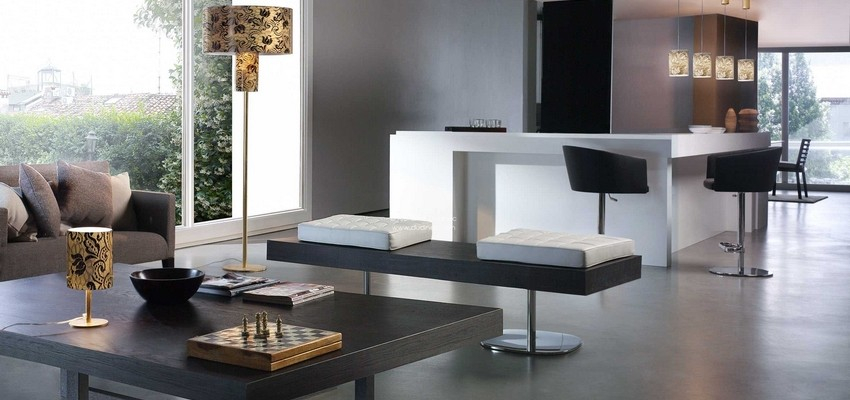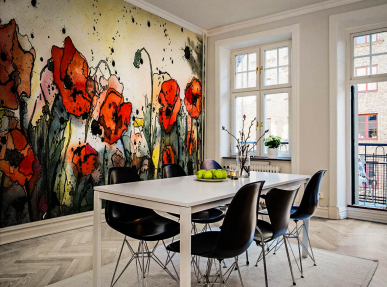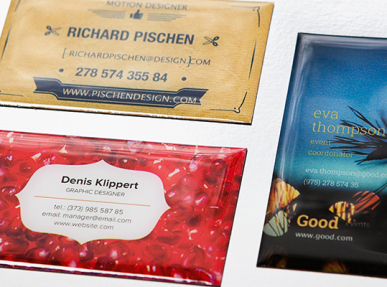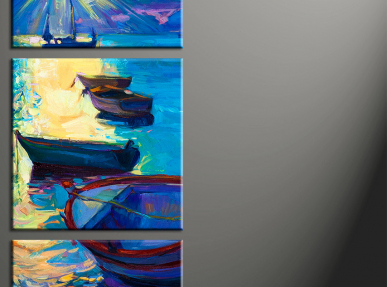Noble Functinality in Constructivism Interior Decor
Art & Photo Prints
Sometimes it can be quite difficult to decide on the style of your home interior, which is not surprising considering the overwhelming amount of styles and materials currently existing. However, if you need a simple and functional design, the constructivism style will be an ideal option. It is relatively modern, and many young people like it.
Constructivism, as a style, appeared at the beginning of the last century. It is considered an alternative to the modern style. If plant ornaments are allowed in modernity, then constructivism does not accept them at all. It is characterized by conciseness, simple and strict forms, functional and compact furniture, mobile partitions. Those who are tired of laces and dollies, smooth lines, lots of textiles and a variety of color combinations prefer to use the constructivism style in their interior. Constructivism is a bit similar to the hi-tech style, but it is not so cold, and to modern, but without floral frills.
The constructivism style originated in the 30s of the twentieth century. In architecture and interior design, there was an acute need for a functional, simple and practical style. Designers supported this idea, in turn, adding constructivism to a special aesthetic. Today it is the most popular among style trends.

General Characteristics of the Style
The decor in constructivism is not just extremely restrained, it seeks to absolutely avoid unsystematic and excessive variegation. This style served as the basis for the branch of such a trend as high-tech. Its main goal is multifunctionality of capabilities, while maintaining the general rigor of lines and shapes, which is easily achieved with the help of productive constructivism in furniture production, as well as new-fashioned built-in furniture of the latest models.
Rules for the design of the premises, accomplished in a constructivist style:
- It is necessary to abandon the decoration characteristic of classical styles. Expressive tools will serve as clear geometric lines, a certain color scheme and competent zoning.
- Remember the benefits and practicality. Each item must strictly have a purpose, and not resemble a decorative element.
- Maximum open space. Zoning is achieved through the use of lightweight movable structures.
- Use available materials and technologies (concrete, glass, metal, plastic). Original ideas by no means always imply an expensive finish: the constructivism style in the interior is quite democratic.
- Use segmentation that is common to all minimalistic directions. Think in advance about dividing the room’s space into separate segments (functional areas). Do not forget about the niches in the walls where it is easy to equip a resting place, mini-study or pantry.

Lighting
Constructivism primarily appreciates natural lighting. Large window openings do a good job of this. Therefore, here, panoramic windows or floor windows, a large window with a door and the possibility of access to a terrace or balcony will be perfect. Curtains are an absolute taboo for this style; in extreme cases, you can hang lightweight blinds or regular blinds. When distributing artificial light, the main requirement will be its expediency.
The chandeliers, like all other lighting fixtures, should be located where they are most needed, where you cannot do without them. Lamps, chandeliers and sconces are required to have only the correct geometric shape, without busting and excessive pathos.
Constructivism Color Scheme
Monotony usually prevails in the constructivism color palette. At the same time, the right to bold and bright accents is retained. The most popular options: a combination of light gray or white with black, red, dark gray tones, light green. As a rule, three shades can dominate, excessive busting can deprive the interior of integrity. Stonework or woodwork in the constructivism style will look more like aliens, instead of a conceived main background they will become a separate bright and absolutely undesirable object.

Finishing Materials
Constructivism does not require large financial investments from you, as the interior uses the most inexpensive materials, such as glass, plastic and metal. After all, the main purpose of the style is not the appearance, but the satisfaction of the real needs of the customer. The aesthetic side of constructivism is quite extraordinary. The notes of elegance, nevertheless, are traceable, they are made by glass surfaces, chrome details, extravagant textiles, as well as bright accents. Laconicism is inherent only in independent styles, such as constructivism.
Space Zoning
The ideal distribution of free space in constructivism excludes its division into rooms, it implies only zoning of the room with the help of furniture and a color palette. Well, the most characteristic aspect of this style is an empty space filled with daylight, minimalism and a large amount of air.

Ceiling
Modern constructivism is not very different from the style direction of the 1920s and 1930s; its main slogan still sounds like "minimalism and rigor." However, the ceiling has undergone some modifications. In those days, they could not boast a stretch ceiling or a plasterboard ceiling, especially of a multi-level form. But in fact, it is not surprising, because progress has not yet reached the constructivism at that time.
Furniture
The absence of decorative details, simple forms, practical upholstery, functionality are the main criteria according to which furniture should be chosen. No less important is the size (remember the “air”) and proper placement. Mobile home furnishings are preferred - they will help divide the interior into functional zones.

Decor Elements and Accessories
In constructivism, decor as such is absent. This style does not accept unnecessary details, so with a strong desire to decorate the room in accordance with the style, only some options are available, for example - you can hang a picture on the wall, but not any landscapes or portraits, only paintings of cubists.
You can put a plain and bright square, triangular or round plate for fruits on the table. Flower vases should also be of regular geometric shape, for example, rectangular or square. If desired, a rug with a geometric pattern can be laid on the floor. These small accessories can create the right accents in your home remodeling project.






 400
400 0
0 Creating a Dream Bedrооm in the Attic
Creating a Dream Bedrооm in the Attic
 Marine-Style Interior of Your Dreams
Marine-Style Interior of Your Dreams
 Coziness of Provence Interior in Your Home
Coziness of Provence Interior in Your Home
 Tips on Creating a Cozy Interior in a Small Apartment
Tips on Creating a Cozy Interior in a Small Apartment
 Elegance of English-Style Interior Decor
Elegance of English-Style Interior Decor
 The Best Color Solutions for a Harmonious Small Kitchen
The Best Color Solutions for a Harmonious Small Kitchen
 Practical and Comfortable Ikea-style Interior
Practical and Comfortable Ikea-style Interior
 Tips on Creation of Fusion Style in the Interior Decor
Tips on Creation of Fusion Style in the Interior Decor
 Interior Accomplished in Neoclassical Style
Interior Accomplished in Neoclassical Style






